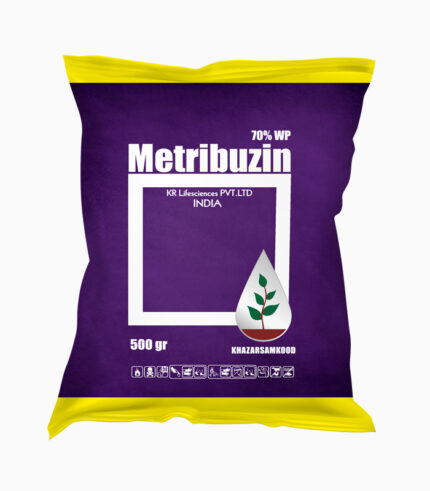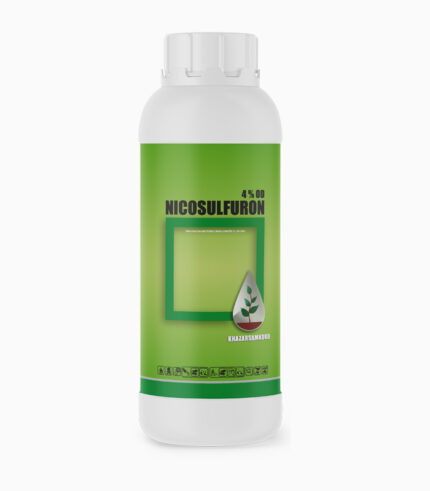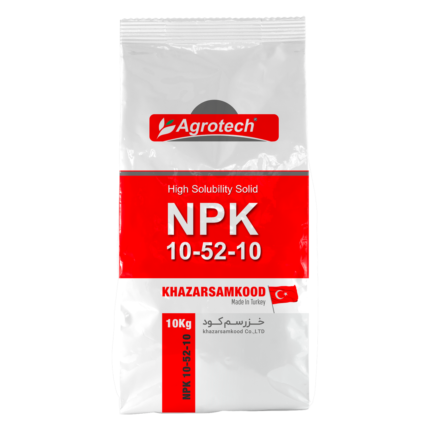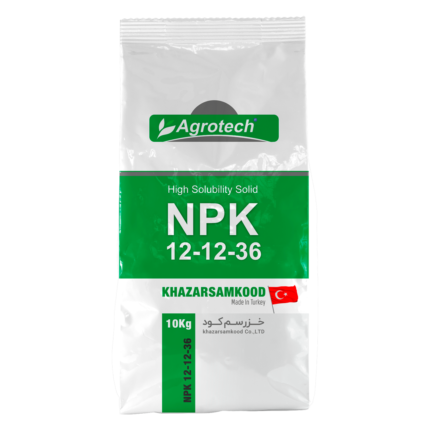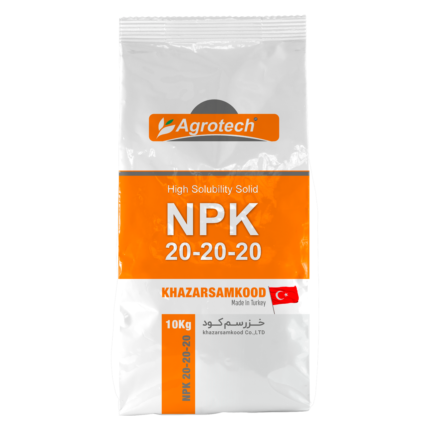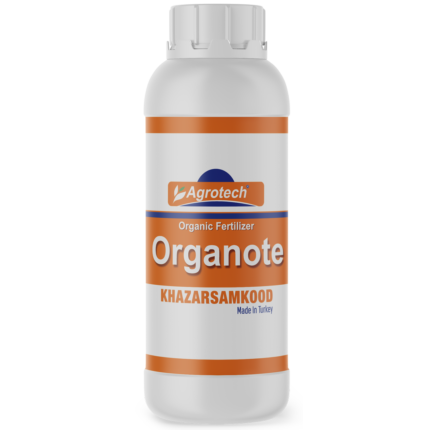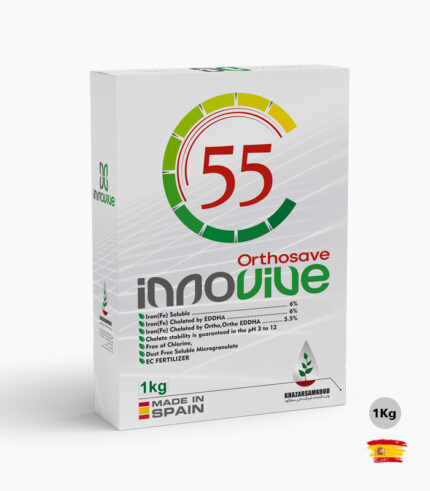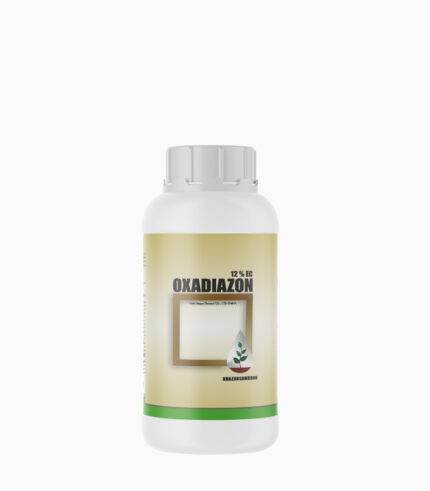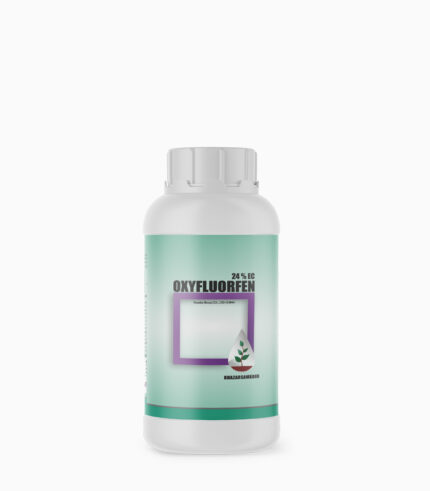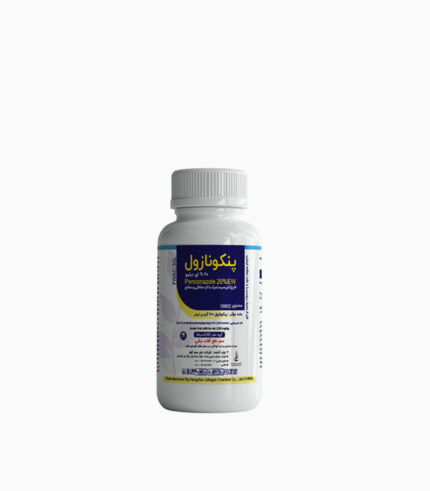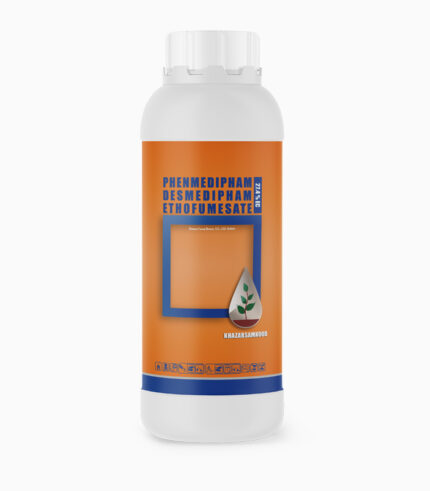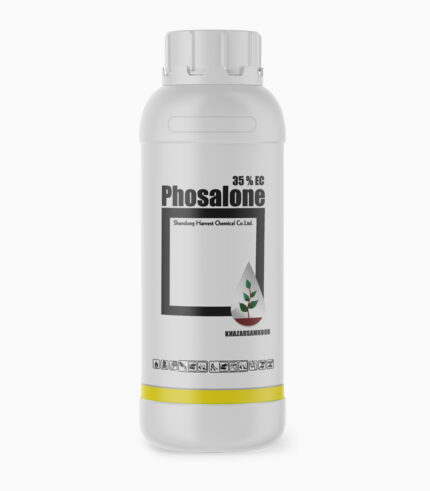Nicosulfuron 4% OD
It is a selective, systemic post-emergence herbicide, absorbed by foliage and roots. It belongs to the class of sulfonylurea herbicides and inhibition of aceto-lactase synthase (ALS) or Acetohydroxyacid synthase (AHAS) mode of action. Its mode of action is by branched chain amino acid valine, leucine, and isoleucine synthesis inhibition.
NPK 10-52-10
“NPK 10-52-10” contains nitrogen, potassium and high percentage of phosphorus, which can be used to supply the elements needed by the plant at the beginning of the vegetative and reproductive stages, as well as to increase rooting and flowering in all crops and reducing flower drop and increasing plant resistance against stresses. The most important functions of phosphorus in plants are energy transfer in plant metabolism, presence in the structure of cell wall phospholipids, cell division, synthesis and transfer of sugar and starch, growth and development of hairy roots, as well as development of reproductive parts.
NPK 12-12-36
“NPK 12-12-36” contains nitrogen, phosphorus and high percentage of potassium, which has been produced to provide the required elements of the plant during the period of reproductive growth and crop maturity. Consumption of this fertilizer improves the color, aroma, taste, as well as increases the quantity of the crops. Potassium is necessary for the production of enzymes, vitamins and protein in plants. It is effective in transporting nutrients inside a plant. Also, potassium increases yield, better taste, color and marketability, increasing crop resistance to environmental stresses and diseases
NPK 20-20-20
“NPK 20-20-20” contains a balanced ratio of macro elements including nitrogen, phosphorus, potassium. This product is a complete and ideal combination for all plants at any stage of growth. "Nitrogen, phosphorus and potassium are the most consumed in a fertilization program. Nitrogen is essential for vegetative growth and is important for the production of starch and protein. Phosphorus is essential for ATP synthesis, as well as root growth and flowering, and potassium is also important as an activator of many metabolic enzymes, which ultimately plays a significant role in increasing the quantity and quality of products.
Organote
"Organote" contains potassium and also organic matter, which is produced through hydrolysis of plant-based raw materials aimed for fertigation (irrigation). Since it contains special compounds, it can be used in different growth stages for different purposes, it will also help the plants save energy for some more crucial physiological processes and will result in more harmonized growth between roots and aerial parts of plants. Potassium has the highest mobility in the plant among other elements needed by plants and has a special role in helping to absorb other elements. Organic matter in this fertilizer enhances the absorption of most nutrients, it as well improves the physical structure of soil, increase soil fertility and the population of microorganisms.
Orthosave-55
" Orthosave 55 (INNOVIVE)" contains soluble Fe, chelated with EDDHA and with ortho-ortho isomer. The iron element is effective in activating more than 200 enzymes and is known to be the most functioning micronutrient in plant. EDDHA is the most effective chelating agent for alkaline soils that keeps iron active for a long time. The ortho-ortho spatial shape of the Fe-EDDHA molecule strongly protects the iron ions from oxidation and guarantees the amount of plant uptake.


